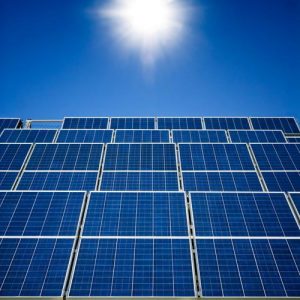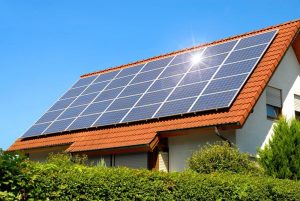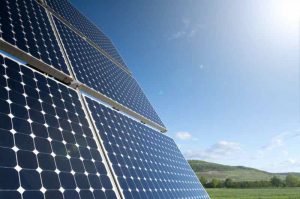How to go about implementing Solar PV in Maharashtra
Electricity tariffs in Maharashtra are the highest in India. If a household in Maharashtra consumes 400 units a month, their monthly power bill is around ₹3,500. Effectively, they are paying almost ₹9 per unit of electricity. For a business, costs can range from ₹9 to as high as ₹17, without accounting for power outages which drive the numbers even higher. Turning off lights and fans, switching to LED lighting, and not using the AC will reduce the power bill for a household. What is a business to do? And when summer comes along, who wants to turn off the fan, especially if there’s a more effective long-term solution for the issue? Solar power is a compelling option for any rooftop owner in Maharashtra.
Maharashtra’s power distribution utility, MSEDCL (MahaDiscom) has announced a net-metering policy for the state. As of December 2015, guidelines have been made available for all solar rooftop owners who wish to set up a grid-tied PV system on their roof. To get such a system up and running, rooftop owners have to first apply to MahaDiscom for approval. The application, which can be found on the MahaDiscom website, can be submitted to their local office or online. Subject to certain guidelines, approval should come through in 21 days from the date of application, and approvals are valid for 6 months. Within this period, the rooftop owner can set up a PV system on their roof and submit a request to MahaDiscom to test and commission the system. This step is essential for getting a net-metered connection. Within 20 days of the request, your system should be up and running. The rooftop owner also has to sign a net-metering agreement with MahaDiscom. Broadly, the agreement is valid for 20 years and provides that if your home or business is a net importer of energy, you pay an electricity bill as usual at prevailing rates. If you are a net exporter of energy thanks to rooftop PV, you receive a credit on the monthly bill showing the number of units exported. At the end of the year, any positive unit balance on your account is cleared by purchase at the published purchase rate. Further details, are available on the MahaDiscom website at: http://www.mahadiscom.in/SolarRoofTopNetMetering.shtm
But how do you decide whether solar is right for you? And if it is, how do you figure out how big a system you need and how it should be designed? First, see this article for basic information on how to think about purchasing, installing and financing a rooftop solar system, including a generic cost-benefit analysis. Next, do you own a roof that receives direct sunlight and is not shaded over by trees, large buildings, or other barriers to sunlight? If you answered yes, a solar PV system might be right for you.
Let’s take a deep-dive into some examples from Maharashtra. First we go back to the household that consumes 400 units a month and pays ₹3,500 a month in electricity bills. They are paying an effective rate of ₹9 a unit. Note that effective cost of power is even higher if you include power outages. Since this home consumes 400 units a month, or roughly 13 units a day, a solar PV system of 3 kWp capacity can supply all its needs. However, because of the way the slab system works, the first 100 units of power are cheaper from the grid for residences. If one is interested in rooftop solar in order to become “grid-independent” or have a zero electricity bill, a 3kWp system is appropriate. On the other hand, if the goal is maximizing return on investment, then bringing down the electricity bill to within the 100 unit slab is a good balance between solar and grid power. Let’s assume this household wants to maximize return on investment and opts for a 2.5kW system. For this system, we assume a mean price of ₹220,000 in our calculations below. If the householder purchases such a system outright and pays the full cost up-front, their monthly out of pocket expenses thereafter would go down to ₹730 (including maintenance costs). With financing for the maximum possible loan amount, and a down payment of 15% or ₹33,000, the total monthly expenses (electricity bill + EMI) are fairly close to that household’s current electricity bill. Table 1 below shows the cost breakdown under different scenarios for this household.
Table 1: Out of pocket costs for Maharashtra household, using 400 units of electricity monthly
| Cash Flow Projections, Monthly | Down payment
₹220,000 |
Down payment
₹33,000 |
|
| Solar, No Loan | Solar, With Loan* | No Solar | |
| Solar Power Generated (units) | 300 | 300 | 0 |
| Net Electricity Usage | 100 | 100 | 400 |
| Net Electricity Bill | ₹479.78 | ₹479.78 | ₹3,589.39 |
| EMI | ₹0.00 | ₹3,226.53 | ₹0.00 |
| Monthly Maintenance Cost* | ₹250.00 | ₹250.00 | ₹0.00 |
| Monthly Out of Pocket | ₹729.78 | ₹3,956.31 | ₹3,589.39 |
*Loan completely paid off by Year 7. Assumes a 7 yr loan @ 11.25%. Maintenance costs start year 3.
For a commercial establishment in Maharashtra with similar power consumption patterns, the case is even more compelling. Their effective cost of power can range from ₹9 to as high as ₹17, depending on the type of connection. Since their slab pricing starts at slightly under ₹7 a unit, a solar PV system that supplies all their power needs gives the best RoI. A 3.3kWp system can be roughly priced at ₹294,000 . Table 2 below shows what this business owner would spend out of pocket on a monthly basis.
Table 2: Out of pocket costs for Maharashtra LT II(B) owner, using 400 units of electricity monthly
| Cash Flow Projections, Monthly | Down payment
₹294,000 |
Down payment
₹58,800 |
|
| Solar, No Loan | Solar, With Loan* | No Solar | |
| Solar Power Generated (units) | 400 | 400 | 0 |
| Net Electricity Usage | 0 | 0 | 400 |
| Net Electricity Bill | ₹0 | ₹0 | ₹5,430.48 |
| EMI | ₹0.00 | ₹4,058.18 | ₹0.00 |
| Monthly Maintenance Cost* | ₹333.00 | ₹333.00 | ₹0.00 |
| Monthly Out of Pocket | ₹338.43 | ₹4,396.61 | ₹5,430.48 |
*Loan completely paid off by Year 7. Assumes a 7 yr loan @ 11.25%. Maintenance costs start year 3.
In all cases outlined above, the rooftop owner would generate a significantly positive net income from savings if they choose to go solar. So if you’re in Maharashtra and have been thinking about going solar, get in touch with Oorjan (http://oorjan.com), India’s first rooftop solar financing platform. We can help you think through the specifics of your situation. If you already have a price proposal and project design from an installer, send it to us for evaluation and financing. If you are just getting started, we can help you choose a highly rated local installer and obtain financing. Loan approvals for EMI schemes typically take 2-3 weeks, while pay-per-unit agreements take upto 6 weeks. We also provide a user-friendly app to monitor system performance once your project is installed, and provide periodic alerts. There has been no better time to go solar!
This post is a guest contribution by Oorjan Cleantech, a company that enables solar rooftop financing. It is an initiative by Alums of IIT Bombay having years of experience in Solar PhotoVoltaic Markets. They have an estimator and contact form on their website www.oorjan.com.
About the Author:
Abhishek Jain is an Alumnus of IIT Bombay with almost 10 years of experience in corporate before starting Bijli Bachao in 2012. His passion for solving problems moved him towards Energy Sector and he is keen to learn about customer behavior towards Energy and find ways to influence the same towards Sustainability. More from this author.




